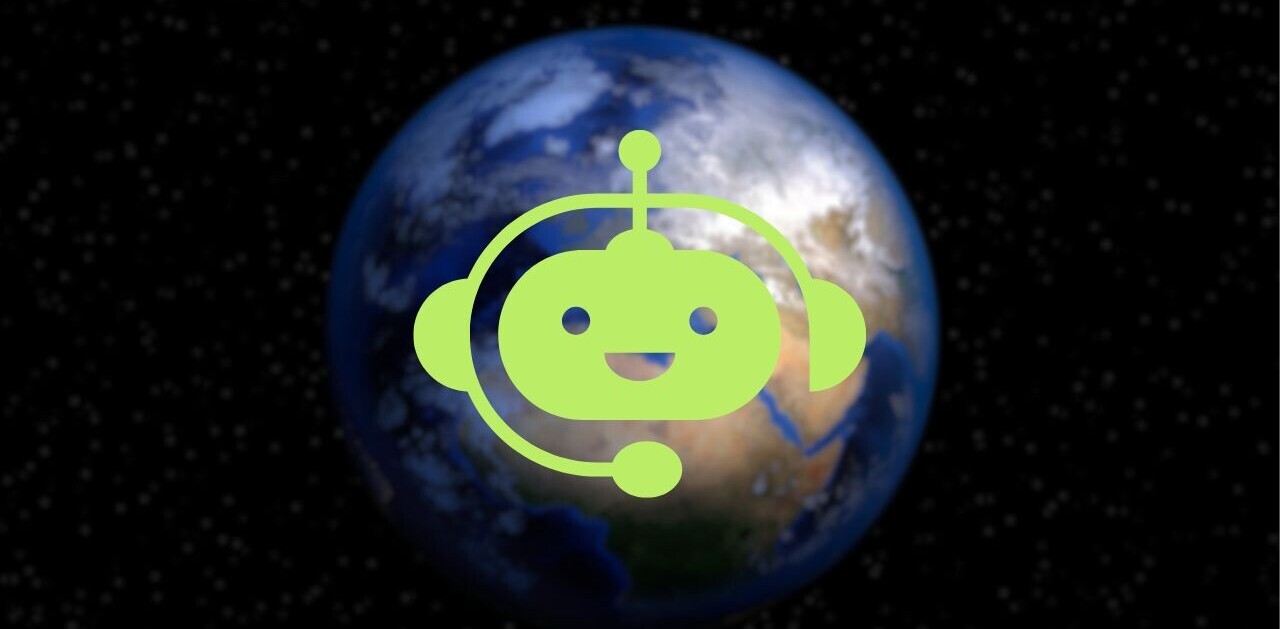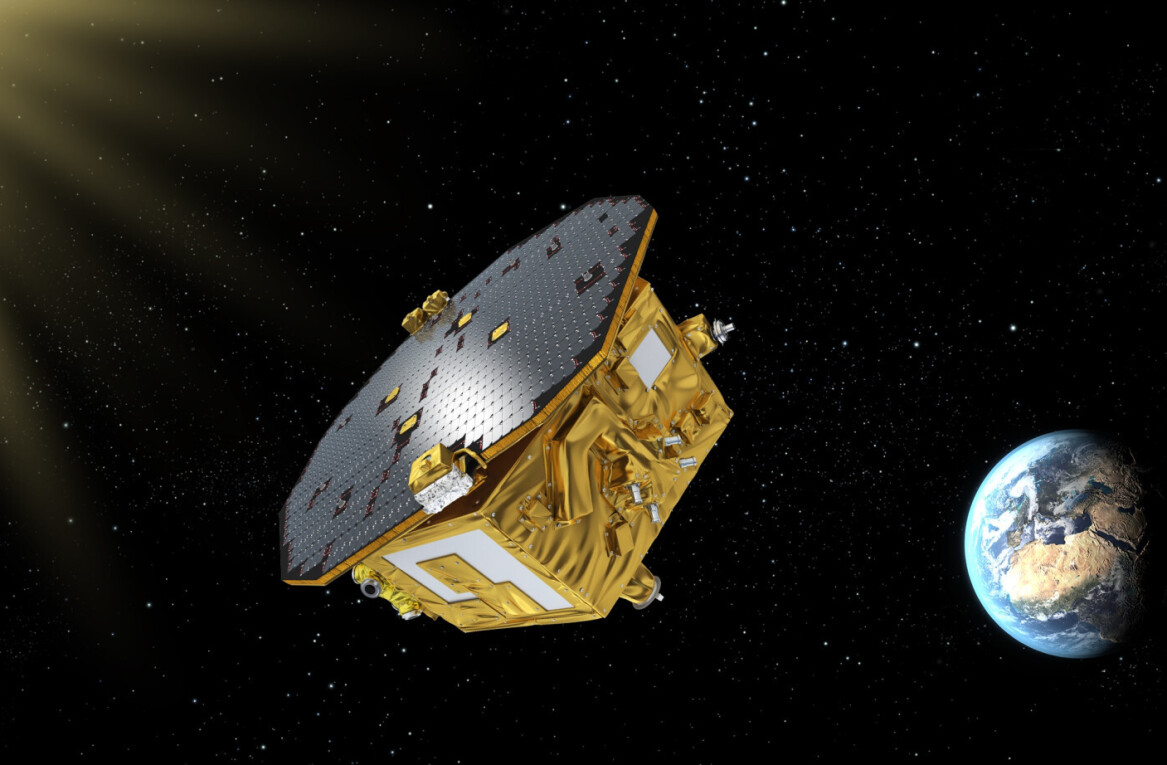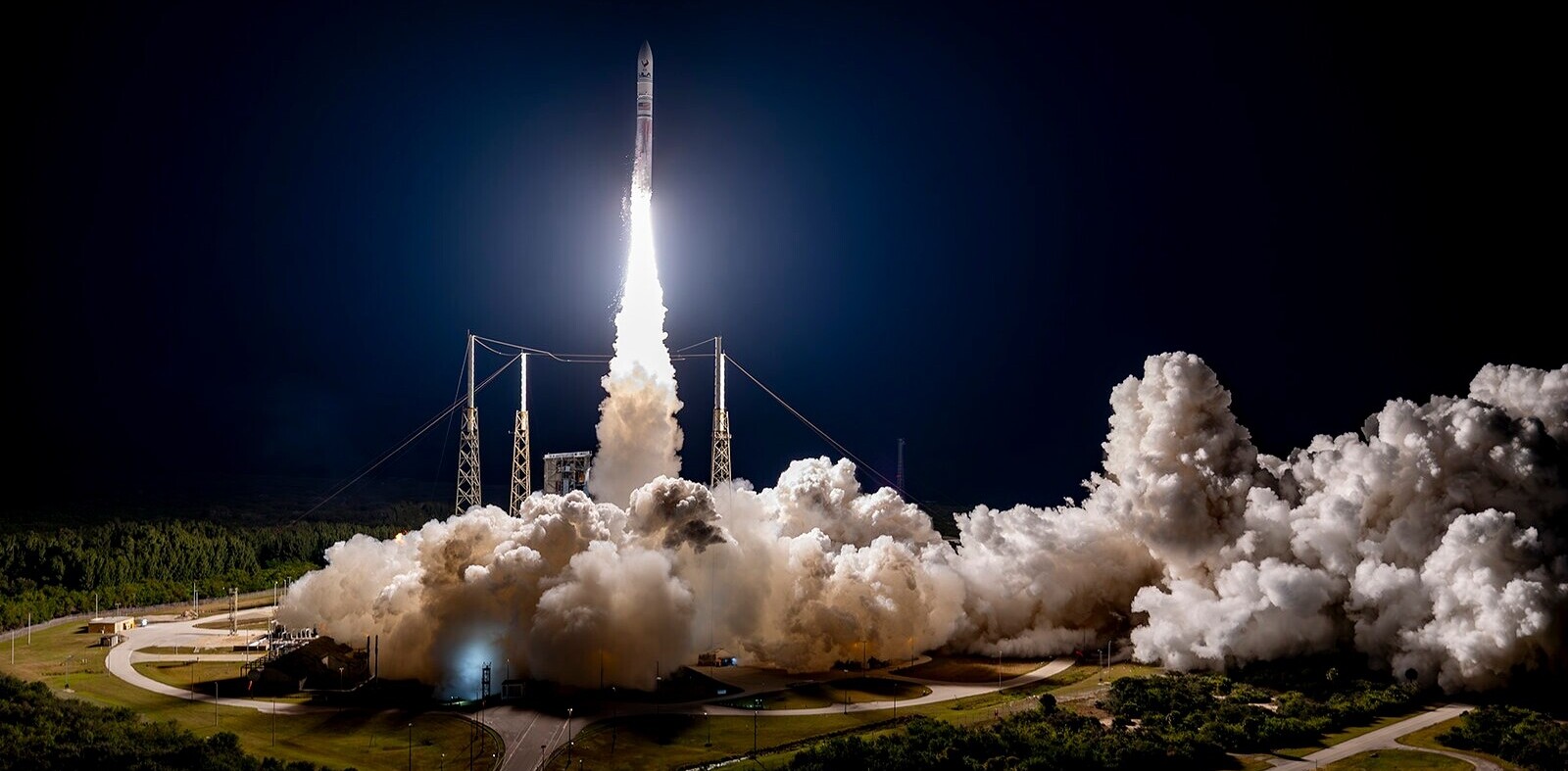Until just a century ago, our galaxy was thought to be the lone family of stars occupying the Cosmos. Philosophers, notably Immanuel Kant in the 18th Century, postulated the existence of other families of stars beyond our own. Unfortunately, their postulations — although correct — were not based in empirical data, and so could not be proven.
This began to change during the 1920s and 30s, as astronomer Edwin Hubble set his sights on other galaxies, using the 2.5-meter (100-inch) telescope recently constructed on Mount Wilson in southern California. For the first time, Hubble was able to clearly see individual stars within M31 — the Andromeda Galaxy. For the first time, families of stars were known to exist beyond the Milky Way.
Hubble also discovered something else — nearly every galaxy races away from each other at tremendous speeds. He also found that these groupings of stars travel at a rate dependent on their distance from us — more distant galaxies race away from us more quickly than local bodies. (Incidentally, there is nothing special about our position in the Cosmos. This same effect would be seen from any location in the expanding Universe).
The big question — which still needs to be precisely answered today — is how fast are they traveling?
Expansion started — WAIT!
Since the Big Bang, the Universe has been expanding.
Edwin Hubble set to measure the speed at which galaxies are racing apart from each other. He found galaxies obey a relationship, now known as Hubble’s Law, showing a linear relationship between the distance to a galaxy and its recessional velocity. This velocity is simply the result of measuring the distance to a galaxy, and multiplying it by Hubble’s constant.
The value of Hubble’s constant is typically shown in odd units, which may seem unfamiliar — kilometers per second per megaparsec (km/sec/Mpc). Let’s start at the end — a parsec is a unit of distance roughly equal to 3.26 light years. Therefore, a megaparsec (a million parsecs) is a distance equal to around 3.26 million light years.
If the expansion rate of the Universe were 70 km/sec/Mpc, than a galaxy 10 megaparsecs away from us would — theoretically — be racing away at (70 times 10, or) 700 kilometers per second. (This is actually so close, local gravitational effects would be significant, but this example shows the math). A galaxy at twice that distance would have a recessional velocity twice that speed, and so on.
Then, the question becomes — what is the value of Hubble’s constant? This is one of the most important questions in cosmology and astrophysics today.
Asking the right question
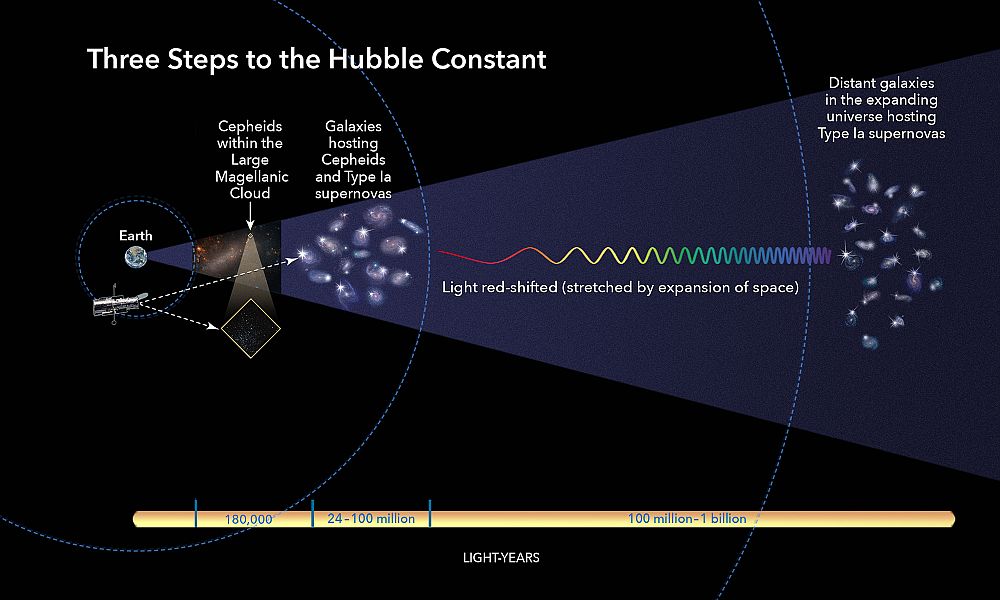
Astronomers utilize several methods to measure the Hubble constant. However — a conundrum has appeared. Observations of our local Universe produce different values than those obtained from study of the ancient (more distant) Cosmos.
Typically, observations of galaxies in our galactic neighborhood show a Hubble constant of around 73 km/sec/Mpc. Observations of ripples in spacetime from the early Universe show a value of about 67 km/sec/Mpc — nearly a 10 percent difference.
Knowing the true value for the Hubble constant would allow astrophysicists to determine much about the Universe, including its age, to a precision unknown today.
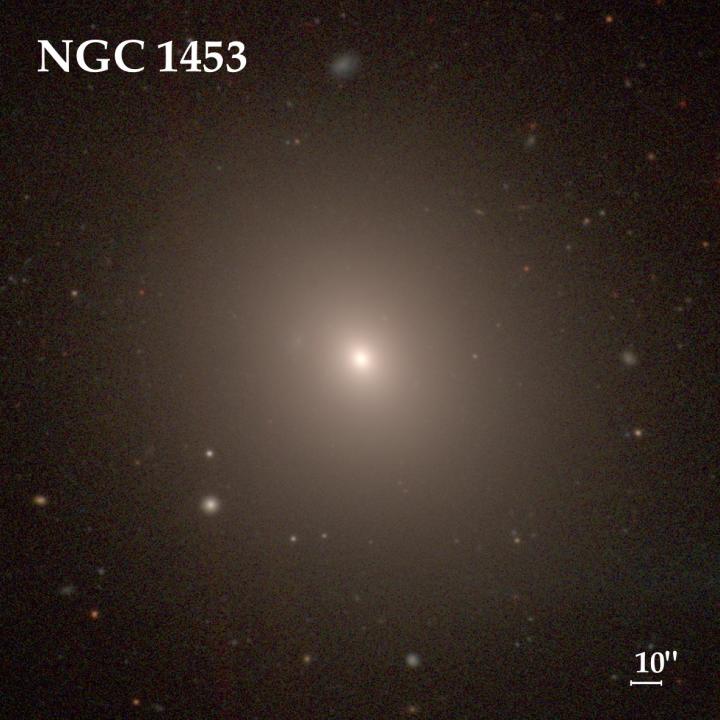
“The universe’s age is calculated using the expansion rate from precise distance measurements, and the calculated age is refined based on whether the universe appears to be accelerating or decelerating, given the amount of matter observed in space. A rapid expansion rate indicates the universe did not require as much time to reach its present size, and so it is younger than if it were expanding more slowly,” NASA explains.
A new study examines the average brightness of stars within elliptical galaxies to more precisely measure their distances from Earth. Using this surface brightness fluctuation (SBF) technique, astronomers examined 63 giant elliptical galaxies near us, seeking an independent measurement of the Hubble constant (often abbreviated as H-naught).
The figure they found for H-naught — 73.3 km/sec/Mpc — is in agreement with three other methods used to measure the Hubble constant from nearby galaxies. Those values average out to 73.5 km/sec/Mpc.
The most distant object in this study is seen 99 Mpc (about 323 million light years) from Earth — a small fraction of the size of the Cosmos.
“For measuring distances to galaxies out to 100 megaparsecs, this is a fantastic method. This is the first paper that assembles a large, homogeneous set of data, on 63 galaxies, for the goal of studying H-naught using the SBF method,” explains cosmologist Chung-Pei Ma from the University of California, Berkeley.
Dark matter is a dish best served cold…
Elliptical galaxies are ancient families of older, mostly red giant, stars, providing a stable infrared signal across their expanse. Images obtained by the Hubble Space Telescope were examined, measuring the brightness of each pixel in the image, comparing it to the average brightness seen in the image. Smoother images were seen from more distant galaxies, allowing astronomers a chance to precisely measure the distance to these 63 targets.
Hit the play button above to watch an interview with Scott Lambros, instrument systems manager for the James Webb Space Telescope, talking about this revolutionary instrument that could help us understand one of the great mysteries in science.
Similarities between this measurement and others found through examination of local galaxies provide further evidence that the Hubble constant is likely to be around 73 km/sec/Mpc.
So, what of the lower values for H-naught obtained from observations of the early Universe? If these numbers are incorrect, it would radically change the lambda cold dark matter (CDM) model of the Cosmos. This theory describes much about the evolution of the Universe using just a few parameters.
“Once you can accept the universe as matter expanding into nothing that is something, wearing stripes with plaid comes easy.” — Albert Einstein
Finding the CDM model is incorrect would radically change our understanding of the Cosmos. There still remains a possibility that some currently-unknown physics could reconcile the two radically different values for the Hubble constant. But, this question remains one of the great mysteries of modern science.
The James Webb Space Telescope, scheduled for launch on Halloween 2021, will be 100 times more powerful than the Hubble Space Telescope. This revolutionary instrument will provide astronomers with their best measurements yet of the Hubble constant as measured by nearby galaxies. And, potentially, it could answer one of the greatest mysteries of the Cosmos.
Details of the study were reported in The Astrophysical Journal.
Get the TNW newsletter
Get the most important tech news in your inbox each week.

